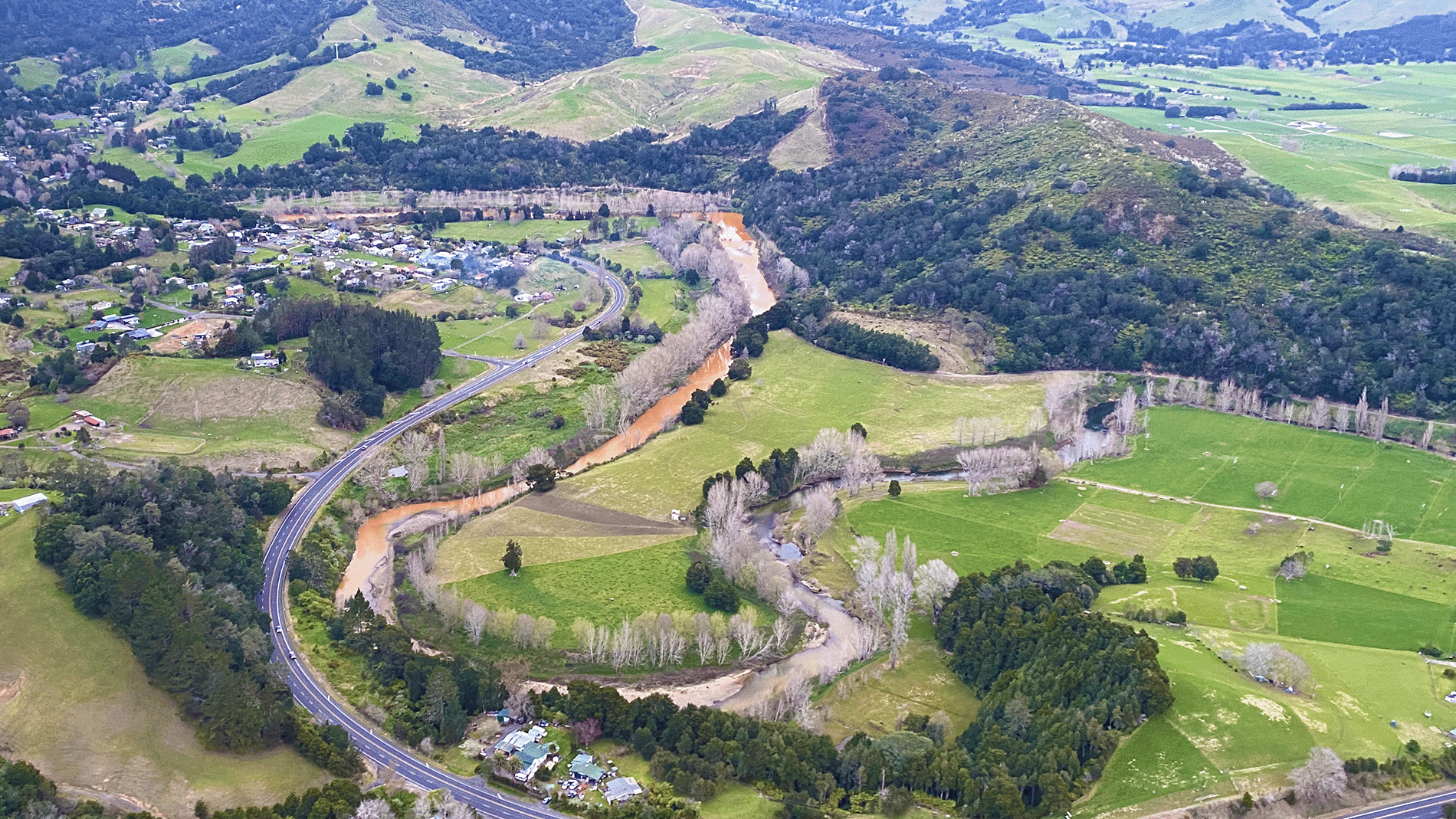Background
At about 3pm on Friday, 23 August, Waikato Regional Council received its first notification of a large, orange plume flowing down Ōhinemuri River in the Karangahake Gorge.
A buildup of bright orange sediment had discharged from a mine shaft entrance, down a steep drop and into a stream that feeds into the Ōhinemuri River near the Karangahake Gorge car park.
Waikato Regional Council is responsible for investigating how the sediment came to be discharged into the river, and the impacts on the river and environment. The Department of Conservation administers the land.
There is high public interest in this incident and a lot of demand from the public and media for information. This webpage has been set up to keep people up to date with what has been done so far and to provide answers to the frequently asked questions being directed at staff or posted on social media.
What we've done so far
On Friday, staff measured the pH and dissolved oxygen levels of the orange water with a handheld water monitoring system. The instant results deemed the results were within normal levels for those two measures.
- A fly over was also made of the Ōhinemuri on Friday afternoon to assess the situation, and again over the Firth of Thames on Saturday about midday. The plume was spotted at Mackytown on the Friday and was estimated by staff to reach the Firth of Thames between 0930 and 1030 on the Saturday. There were no obvious sightings of the orange sediment in the Firth of Thames during Saturday’s flight.
- Waikato Regional Council got in contact with the Department of Conservation, Hauraki District Council, Forestry groups operating in the area, the Coromandel Marine Farmers’ Association, Civil Defence Emergency Management, the Waikato DHB, iwi and mining experts from the area as soon as it was alerted of the incident.
- Our science team advised that if the sediment was from historic mining assets, it could contain residual cyanide and heavy metals.
- Downstream water-take users (the majority are irrigation) were identified and all pumps were turned off.
- The Coromandel Marine Farmers’ Association was alerted to the council’s estimations of the plume reaching the Firth of Thames.
- Photos from the public and Hauraki District Council helped determine the source of the sediment, which was confirmed by council staff on Saturday morning.
- Water and solid samples for analysis were taken on Friday evening, Saturday and Monday.
- The first lot of results from samples have been analysed.
- Council staff are completing a thorough examination to try and determine how the event occurred, what a “normal” discharge from the mine should look like, how much sediment was expelled from the mine shaft, and what more we could expect.
Monitoring results so far
- We've tested for 30 heavy metals and cyanide in all our samples taken. We’ve taken samples from the stream into which the sediment was initially discharged, and the Ōhinemuri River into which that stream runs. We have also taken solid sediment samples.
- The results show elevated arsenic levels in the sediment and also in water samples with suspended sediments.
- While arsenic is also detected in the clear flowing water, the levels are well within drinking water and ecological protection guidelines.
- Arsenic occurs naturally but is commonly found in mine working waste as a result of the mining process.
- The arsenic in the sediment could pose longer term risk to aquatic organisms downstream, where it may accumulate, especially to freshwater animals that live within the riverbed.
- High iron in the sediment accounts for the bright orange colour, and the presence of high iron helps mitigate the toxicity of arsenic (reduces its bioavailability considerably).
- The next most significant metal detected in the solid sediment sample is antimony. While at elevated levels, its risk to human health is low compared to arsenic. Antimony occurs naturally and is commonly found in mine working waste as a result of the mining process.
- Low levels of antimony and thallium were detected in water samples, well within protective guidelines.
- Copper and zinc were also identified as being elevated in the stream samples, but at levels similar to what could be seen in urban stormwater.
- Mercury has not been detected in water samples but has been detected in a sample of the solid sediment at a level below sediment guidelines and way below any human health guidelines.
- Cyanide, which was often used to help separate out the gold and silver from the mined minerals, has not been detected in any of the samples.
- The results also show the water is not very acidic, which also reduces the concern around short term effects on fish.
Frequently asked questions
Media releases to date
Wednesday 28 August
Arsenic levels drop from previous day’s sampling results
Tuesday 27 August
Preliminary results from orange sediment in Ōhinemuri River analysed
Monday 26 August
Preliminary results from orange sediment sampling expected in next 24 hours
Saturday 24 August
Council confirms source of orange sediment
Council checking old mine shaft after river discolouration
Friday 23 August
Social media
You can also follow us on Facebook for the latest updates.

